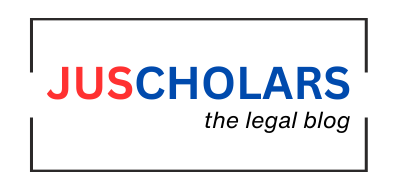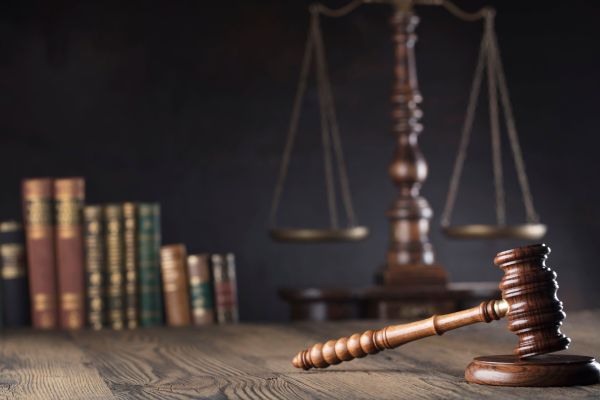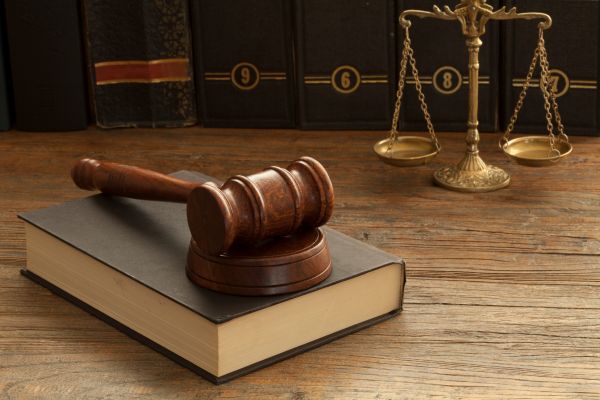A trademark is a design, symbol, word, or phrase that identifies the source of your product and distinguishes your product from others.
According to Trademark Act 1999, (section 2(zb))
Trademarks are those marks capable of being represented graphically and distinguishing the good of one person from others. trademark includes a device, heading, label, signature, word, letter, name, numeral, packing, combination of colours, or any combination of the above.
Essentials of a good trademark
- It should be easy to speak and remember so that the public can easily spell or speak
- Should not be lengthy and complicated
- It should not be barred under the trademark act under prohibit classes of trademark
Types of trademark
1. Word Marks: These are trademarks consisting of letters, words, or numbers that identify a brand (like “Nike”).
2. Design Marks (Logos): Trademarks that protect a brand’s logo or visual design (such as the Apple logo).
3. Combination Marks: Trademarks that protect a combination of words and visual elements (for example, the Starbucks logo which includes both text and image).
4. Sound Marks: Trademarks protecting unique sounds linked to a brand (like the roar of the MGM lion).
5. Color Marks: Trademarks protecting a specific colour associated with a brand (for instance, the blue colour used by Tiffany & Co.).
6. Shape Marks (Trade Dress): Trademarks that protect the three-dimensional shape of a product or its packaging (like the distinctive Coca-Cola bottle).
7. Scent Marks: Trademarks protecting a unique scent that identifies a product (such as the smell of Play-Doh).
8. Motion Marks: Trademarks protecting a particular sequence of movement or animation (like the unique opening motion of Lamborghini car doors).
9. Hologram Marks: Trademarks that cover holographic images used in branding.
10. Pattern Marks: Trademarks that protect distinctive patterns used on products (like the monogram pattern used by Louis Vuitton).
11. Position Marks: Trademarks that protect the specific placement of a mark on a product (for example, the red soles on Christian Louboutin shoes).
12. Collective Marks: These trademarks identify members of a group or association, indicating that a product or service comes from a group with shared standards (such as the “CPA” mark for certified public accountants).
13. Certification Marks: Trademarks that show that products or services meet certain standards or quality levels (such as the “Fair Trade” certification).
Duration of trademark
Trademark is registered for an initial period of 10 years from the date of registration
Renewal period – trademark can be renewed for successive 10-year periods There is no limit to the number of times a trademark can be renewed as long as it continues to meet legal requirements
Renewal process – the owner must file a renewal application and pay the renewal fees within six months preceding the expiration of the current registration.
Registration process
- Search – firstly you have to research on trademark and if the trademark is available and not too similar to the existing one
- Prepare – gather the information about the trademark and the good/ service it will cover
- File – submit the application to the registrar in the trademark office in a prescribed manner with prescribed fees
- Examine – The registrar reviews the application raise an objection if there is some error in the application and issues an examination report.
- Publish – after examination if the registrar is satisfied then he publishes the mark in the trademark journal any third party can oppose the mark by filing a notice of opposition within 4 months from the date of advertisement of the mark
- Register – if no opposition is raised then the registrar registers the trademark.
Grounds of opposition, process
Who can file an opposition
Any person, or entity who believes they will be adversely affected by the registration of a trademark can file an opposition for registration of a trademark published in the trademark journal.
Owners of existing registered trademarks can oppose the new application if they believe it conflicts with their mark and causes confusion and harm to their established brand.
If the trademark application is pending and the party believe that the new mark may harm their rights, then they can file an opposition.
Section 21 – opposition to registration and counterstatement
Any person, from the date of advertisement till the next four months may file an application of opposition, in a prescribed manner with prescribed fees the application must be filed on trademark form 5, also known as TM-O (trademark opposition), and then the status f trademark will be shown as opposed in trademark portal
The opposition can be filed by a customer, competitor member of the public or any other person.
Grounds of opposition
Absolute grounds of opposition are provided under section 9 of the Trademark Act, Trademark not being distinctive or not being capable of distinguishing the goods/services of the applicant from the others.
Relative grounds of opposition are provided under section 11 of the Trademark Act, Trademarks being phonetically, visually, conceptually, confusingly, and deceptively similar to an already existing mark ( similar to an opponent’s mark ) creates confusion among the public
Other relevant grounds depend on the facts of the matter ( for eg, – the applicant’s mark is well known, copyright, geographical indication etc.
Section 9- (absolute ground)
absolute grounds for objections by the trademark registry, focusing on the inherent characteristics of the trademark itself. This section examines factors such as the distinctiveness, descriptiveness, and potential for confusion of the trademark. These grounds are generally consistent across different jurisdictions. Here are some key aspects:
1. Distinctiveness: A trademark must be distinctive, meaning it should have the ability to differentiate the goods or services of one entity from those of others.
2. Descriptive Marks: Trademarks that directly describe the goods or services they represent may face objections.
3. Deceptive Marks: Marks that have the potential to mislead consumers or create a false impression regarding the nature, quality, or geographical origin of the goods or services are likely to be objected to.
4. Generic Marks: Generic terms commonly used to describe a particular category of goods or services cannot be registered as trademarks.
5. Prohibited Marks: Certain marks are prohibited from registration due to their offensive, immoral, or misleading nature. This may include marks that promote hate speech, illegal activities, or those that conflict with public policy or religious sentiments.
Section 11 – ( Relative grounds )
relative grounds for objections raised by the trademark registry, emphasizing the potential for confusion between the new trademark application and an existing trademark. These grounds are designed to safeguard the rights of current trademark owners and can differ by jurisdiction. The key points include:
1. Similarity: The new trademark should not be similar to an existing registered or pending trademark in the same or a related class of goods or services. This similarity might be in visual appearance, sound, or concept.
2. Likelihood of Confusion: The main concern is whether the average consumer might be confused or mistaken by the coexistence of two similar trademarks.
3. Prior Use of Trademark: A third party with proof of prior use and an established reputation of a similar trademark can raise an objection based on their earlier rights.
4. Well-Known Marks: Well-known trademarks may receive protection even if they are not registered in a particular jurisdiction, to prevent their reputation from being diluted or exploited unfairly.
Other relevant sections
- Section 12 of the Trademark Act -“honest concurrent use,” where two different entities have been using the same or similar trademarks over a long period in good faith. Although this could lead to some confusion, it might be tolerated. In such cases, opposition can be filed.
- Section 28 grants rights to trademark owners once their mark is registered. The registered owner can oppose applications for similar trademarks and seek legal remedies if their trademark rights are infringed upon, according to the Act.
- Section 29 -infringement of registered trademarks. It states that if an unregistered trademark is used without permission and is identical or confusingly similar to a registered trademark, leading to public confusion and potential association with the registered mark, opposition can be filed. This also includes cases where the registered mark is well-known, and unauthorized use could harm its reputation or unfairly benefit from it.
- Section 102 -falsification of trademarks. It includes making a similar or deceptively similar trademark without the original owner’s consent or altering an existing trademark. This also covers filing for a trademark with false descriptions of goods or services. The original trademark owner can oppose such actions.
- Section 103 – penalties for applying false trademarks or trade descriptions. Offenders may face imprisonment for six months to three years and fines ranging from Rs. 50,000 to Rs. 2,00,000.
Procedure for Trademark Opposition
Notice of opposition (rule – 42)
File an application of opposition under section 21 of the act, in a prescribed manner with prescribed fees, within 4 months from the date of publication of the advertisement.
Counter statement or response to application (rule -44)
In response, the applicant files a reply of notice of opposition, and then the applicant submits a counterstatement in the form of TM-O within two months of receiving a copy of information from the registrar, if in any case, the applicant fails to submit a counterstatement within prescribed period then the application of registration of trademark considered as abandoned or withdrawn.
Opposition’s party evidence (rule -45)
After receiving the counterstatement from the applicant, the opponent must file an affidavit supporting the opposition, if the case where opponent relies on notice of opposition only then, he must inform the registrar in writing
Evidence supporting application (rule-46)
If the applicant in addition wants to provide evidence then he must file an intimation with the registrar within two months of receiving the opponent’s intimation. if the applicant relies on counterstatement only then he must inform the registrar and opponent in writing, otherwise registrar will deem the application abandoned.
Opponent’s evidence reply (rule 47)
In addition, the opponent has the opportunity to submit further evidence within one month of receiving the evidence of applicant’s evidence.
Hearing
After the evidence submission phase, the Registrar issues a notice to both parties, specifying the date of the hearing. This hearing date is scheduled to be at least one month after the issuance of the initial notice. The hearing will focus on the notice of opposition, the counter-statement, and all submitted evidence. Both parties must inform the Registrar of their intent to attend the hearing.
If a party needs to postpone the hearing, they can request an adjournment by filing Form TM-M, which must be submitted at least three days before the hearing date. However, each party is allowed to request an adjournment only twice. During the hearing, the Registrar listens to the arguments and reviews the case based on the merits presented. If a party fails to attend the hearing, the Registrar may proceed and make a decision that could be unfavourable to the absent party.
Author: This article is written by Somya Sharma, a law student at Delhi Metropolitan Education, affiliated with Guru Gobind Singh Indraprastha University.






